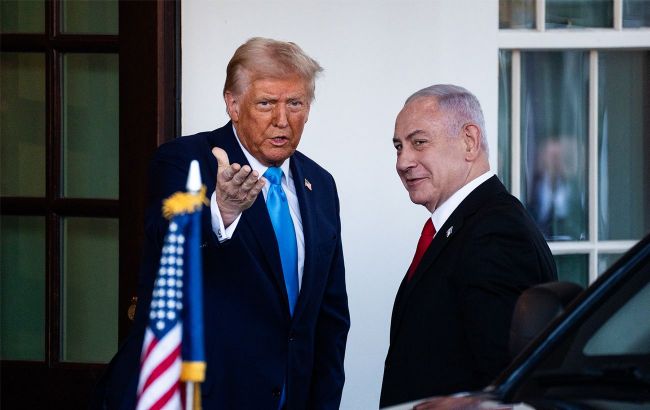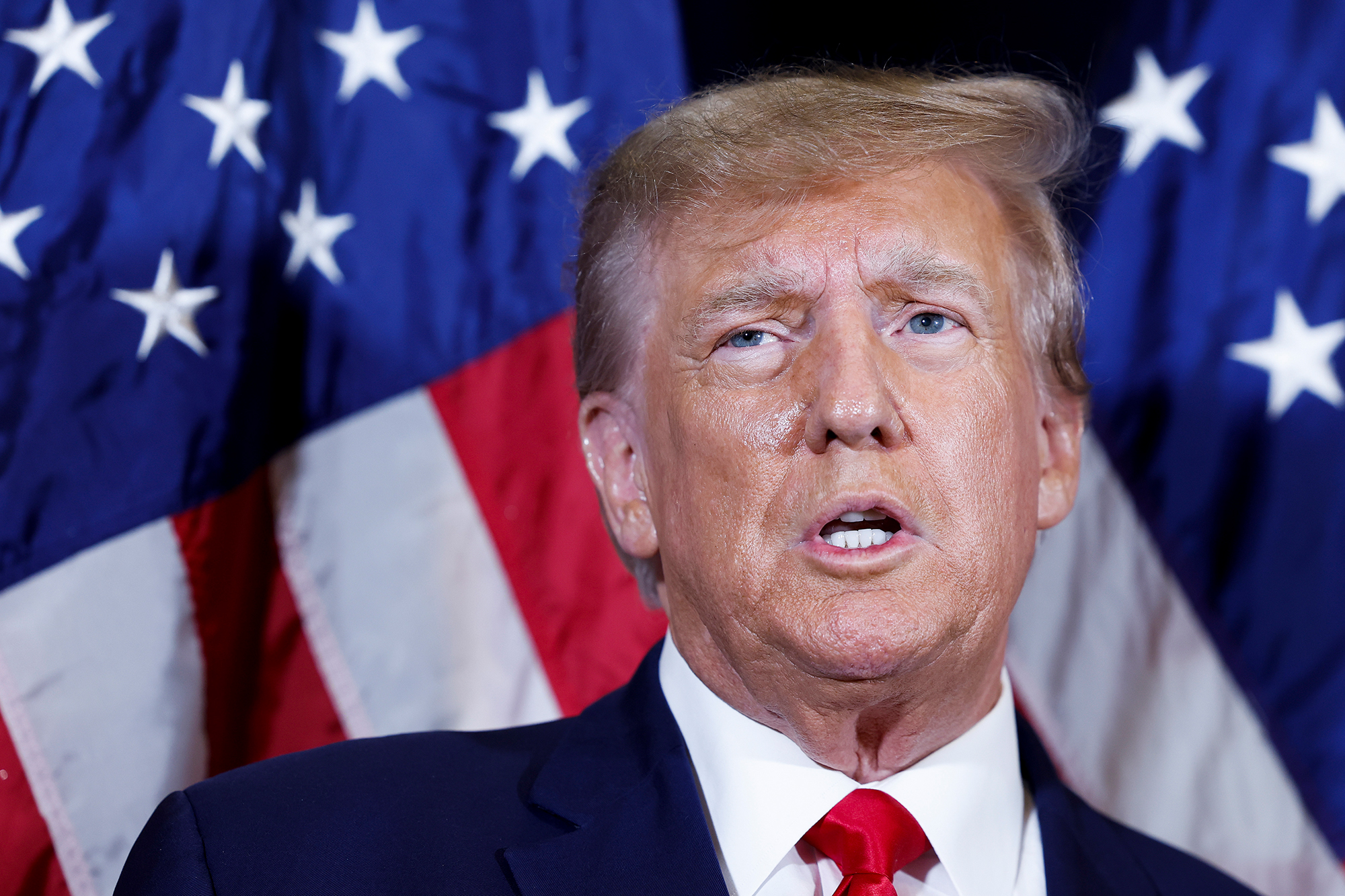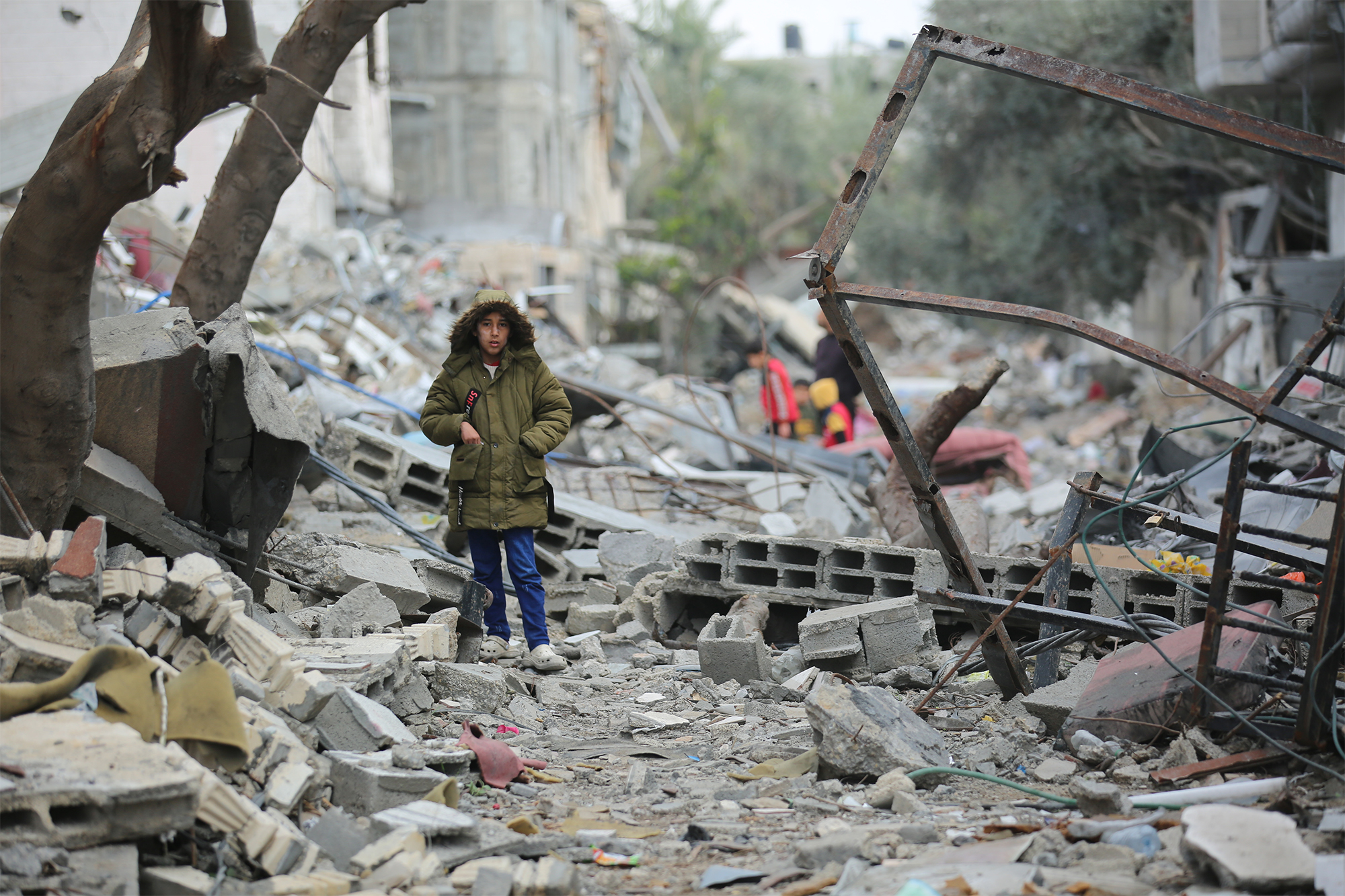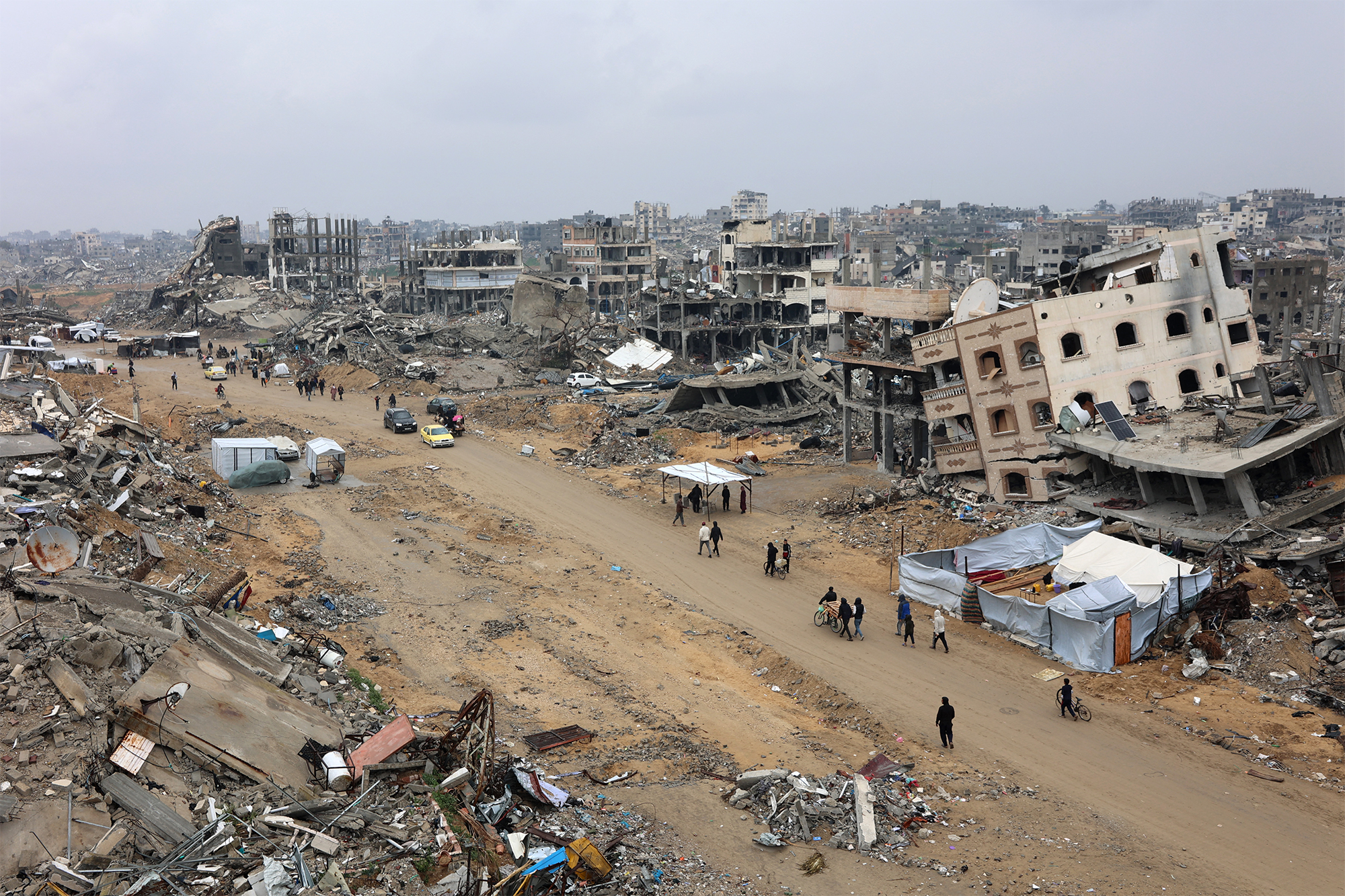Plan or disaster? Why Trump wants to 'take over' Gaza — and will Middle East agree
 Photo: Donald Trump presented his plan for the Gaza Strip at a meeting with Benjamin Netanyahu (Getty Images)
Photo: Donald Trump presented his plan for the Gaza Strip at a meeting with Benjamin Netanyahu (Getty Images)
US President Donald Trump is once again impressing the world with his radical ideas. This time, he proposed to relocate up to 2 million residents of the Gaza Strip, take the enclave under American control, and turn it into a “Riviera of the Middle East.”
Read below what Trump said, how the world reacted, and whether it means a change in the approach to solving the Palestinian issue.
Contents
"If they (the Israeli hostages - ed.) are not back by the time I get into office, all hell will break out in the Middle East, and it will not be good for Hamas, and it will not be good, frankly, for anyone,” Donald Trump said at the beginning of the year.
At that time, Special Envoy Steve Witkoff, along with the Joe Biden administration, was already working with negotiators in Qatar to prepare a ceasefire agreement for Israel and Hamas. This agreement came into force on January 19, just before Trump's inauguration.
The first stage of the agreement provides for the exchange of 33 hostages for nearly 2,000 Palestinian prisoners. As of today, 18 Israelis and foreigners have been released. Negotiations have begun on the second phase, which involves the release of the rest and the withdrawal of Israeli troops.
Hamas demands that the deal includes not just exchanges but also guarantees for the militants themselves. Israel wants the opposite - the elimination of terrorist power in the enclave - and reserves the right to continue the war. Obviously, someone will have to give in, but it is difficult to make predictions.
The third phase involves the restoration of the destroyed enclave and is expected to last for 3 to 5 years. So far, there have been few specifics about this. But in the third week of his presidential term, Trump presented his vision - to resettle 1.8 million Palestinians, build a Middle East "Riviera" and, possibly, establish military control over the Gaza Strip.
What Trump proposes for Gaza Strip
Trump started talking about the resettlement of Palestinians almost two weeks ago. "You're talking about a million and a half people, and we just clean out that whole thing,” he said, calling on Egypt and Jordan to accept more people from the Gaza Strip. Both countries called the proposal unacceptable.
Earlier, he met with Israeli Prime Minister Benjamin Netanyahu. Trump reaffirmed that Hamas must be destroyed, saying that Gaza has become a “symbol of disaster and destruction” and that life there has become horrible. The local population should not stay there and rebuild, so one should “turn to countries with a good heart” that will accept the displaced people, and they “can live in nice safe homes, in harmony and peace.”
Trump said the rich countries of the region should pay for this, making it clear that people can be sent not only to Egypt and Jordan.
 Photo: Donald Trump has made several striking proposals for Gaza (Getty Images)
Photo: Donald Trump has made several striking proposals for Gaza (Getty Images)
He also said that the United States would "take over" Gaza and take responsibility for reconstruction. “We will level everything out, all the destroyed houses. We will create an economy that can provide an infinite number of jobs and homes for people, only if they do not go back. They cannot go back there. Otherwise, everything will happen again,” the president emphasized.
Answering journalists' questions, Trump said that he had discussed the resettlement of Gaza with many people, and the idea of American control allegedly found support. For his part, Netanyahu said that one of Israel's goals is to get rid of the terrorist threat forever. “President Trump sees it on a much larger scale. I see that it can change history,” he added.
Trump acknowledged that the US army may be needed to effectively control the Gaza Strip. But he did not answer the question about the resistance that the Palestinians might put up. He also avoided answering whether the new plan meant the end of the American policy of “two states for two peoples.”
According to him, the point is to bring stability and “build a beautiful society in Gaza.” He also envisions how not only Palestinians, but also “people of the whole world” will live there. In fact, the renewed Gaza Strip could look like the “Riviera of the Middle East.”
“This could be something that could be so valuable, this could be so magnificent... We’ll make sure that it’s done world-class. The King of Jordan and the President of Egypt will open their hearts and help us... They say they won't take them (Palestinians - ed.), but I say they will,” Trump added.
He did not explain what legal authority would give the United States the right to control the sector, nor did he mention the fact that forced resettlement violates international law. According to The Wall Street Journal, back in the summer of 2024, in a phone conversation with Netanyahu, he called the Gaza Strip “prime real estate” and asked him to think about what types of hotels could be built there. But at the time, Trump did not express the idea of possible direct US control.
How world reacted to Trump's ideas
Trump's statements caused a wide response. In general, they have been criticized in the Arab world, the international community, and among American democrats.
“Trump's remarks about his desire to control Gaza are ridiculous and absurd, and any ideas of this kind are capable of igniting the region,” said Hamas spokesman Sami Abu Zuhri.
The head of the Palestinian Authority Mahmoud Abbas said that the Gaza Strip is “an integral part of the land of the state of Palestine”. The Egyptian Foreign Ministry insists that Gaza reconstruction projects should not include the resettlement of Palestinians.

Photo: The international community is mostly not ready for Trump's ideas about the future of the war-torn enclave (Getty Images)
Crown Prince Mohammed bin Salman of Saudi Arabia, a key US ally in the Arab world, rejects any attempt to displace the population of the Gaza Strip. He has also threatened to refuse to establish relations with Israel without the creation of a Palestinian state (as part of the Abraham Accords Declaration signed with several Arab countries during Trump's first term).
Russian president Vladimir Putin said that a settlement in the Middle East is possible only based on the principle of two states: Israel and Palestine. Turkish Foreign Minister Hakan Fidan believes that any plan without the Palestinians in the governance of Gaza will lead to an even greater conflict.
“China hopes that all parties will take advantage of the ceasefire and post-conflict management as an opportunity to return the Palestinian issue to the right path of political settlement based on a two-state solution,” the Chinese Foreign Ministry said.
According to British Environment Secretary Steve Reed, the UK's position remains that civilians should be able to return to their homes and rebuild their lives. Australian Prime Minister Anthony Albanese has declared his commitment to a two-state solution. German Chancellor Olaf Scholz had previously criticized Trump for wanting to resettle Palestinians.
As expected, American Democrats opposed the proposal. House member Rashida Tlaib, one of the first Muslim women in the US Congress, called Trump's statements “fanatical bulls" and said that the Palestinians would not go anywhere.
“He’s totally lost it. A US invasion of Gaza would lead to the slaughter of thousands of US troops and decades of war in the Middle East. It’s like a bad, sick joke,” said Democratic Senator Chris Murphy.
His colleague Chris Van Hollen emphasizes that the proposal to resettle up to 2 million Palestinians and, if necessary, establish military control, looks like “ethnic cleansing under a different name. And this declaration will undermine the position of the United States and its Arab allies in the Middle East. “Congress must resist this dangerous and reckless idea,” he added.
“Many Gazans descended from Palestinians who fled parts of present-day Israel and have never been able to return to their previous homes. I’m skeptical many would be willing to leave even a shattered Gaza,” said Jon Alterman, senior vice president of the Washington Center for Strategic and International Studies (CSIS).
What Trump's statements mean
While the two-state solution used to be dominant, Trump is approaching the Middle East problem differently. The destroyed enclave is uninhabitable, people need to be displaced. And to build something, Hamas should not be here, and the United States is taking control, explains Zvi Zilber, editor-in-chief of Best Radio (Israel).
“The Arab world is shocked. Some are in denial, some are in anger, but then there will be a stage of bargaining in which Trump feels free. When the bargaining starts, maybe there will be some changes. Because we cannot continue to think that 1.8 million people will live in peace with Israel if a non-viable state is declared. In the end, these people are hostages of Hamas with a very developed Stockholm syndrome,” he told RBC-Ukraine on YouTube.

Photo: The war-torn Gaza Strip is uninhabitable (Getty Images)
According to the logic of the new US president, Israel should become an integral part of the Middle East, and gain the recognition of its neighbors, which will lead to peace and a solution to the problem of terrorism.
“We in Israel have taken this with inspiration. We understand that this is likely a high bid for further bargaining and the real results may be less. But America is getting out of the box that has kept us banging our heads against the wall for 35 years with the idea of a two-state solution,” he said.
He considers the possibility of relocating Gaza as entirely realistic if it is done in an organized manner, with housing prepared for the refugees, part of the costs covered by the US, and resettlement also accepted by Canada, Australia, and other Western and Eastern countries.
"Syria is practically empty; now the process of restoration will begin. When the word 'Palestine' had not yet been invented, they called this region Southern Syria. Ultimately, they can be relocated to Syria - if there is political will," said Zilber.
International law is the last thing that interests Trump, Zilber believes. And if the Americans decide to turn Gaza into a Middle Eastern "Riviera," it is unlikely to face widespread condemnation.
"Yes, there will be an outcry because after denial comes anger. But then comes the bargaining stage; we’ll see how he manages to negotiate. Will principles (of international law, - ed.) suffer? Yes, but in the end, both Israelis and Palestinians will benefit. I think this will be a win-win situation," he believes.
As for the timeline for Gaza's reconstruction, it is too early to consider a 10-15-year horizon. The key is to initiate the processes. There are still four years of Trump’s term ahead. If during this time Israel can sign the Abraham Accords with Saudi Arabia and other Middle Eastern countries, full relocation of Gaza may not be necessary, Zilber added.
Ukrainian political strategist Taras Zahorodniy describes the proposal for Arab countries to take in people from the Gaza Strip as Trump's attempt to close the Hamas and Palestinian issue once and for all, end the confrontation, and bring peace in the Middle East radically.
"He once again confirmed that real estate developers worldwide are more or less the same: their 'hearts bleed' when they see the undeveloped coastline. He will build hotels everywhere and allow the economy to function properly... It was unclear why he was 'training' on Canada, Mexico, Colombia, and Manama so hard. Now it’s clear - it’s the rhino tactic. When a rhino charges at you, it’s not its problem; it’s yours. Trump is returning the US to a Cold War state when they periodically wage wars so that the free world feels safe," he said.
The rhino tactic is evident in another field as well. On the eve, Trump announced a shift to maximum pressure on Iran, aiming to prevent it from developing nuclear weapons and to reduce Iranian oil exports to zero through sanctions on buyers.
According to Zilber, this approach could also develop into a useful mechanism for Ukraine. For example, it could be applied to Russia to force it to end military aggression and come to the negotiating table.
***
It remains unclear how Trump's idea could impact the peace process in Gaza. On one hand, Hamas terrorists will have a chance to present themselves again as "fighters" for the Palestinian population. On the other hand, Netanyahu’s demand to completely eliminate Hamas may seem far more reasonable to regional players than Trump's proposals.
But one thing is certain - Trump is not afraid to challenge conventions. His plan may fail, and the relocation may not work, but ending the war while Hamas remains a force will also not fully resolve all issues. And Trump’s willingness to push boundaries may open debates on finding new approaches to the Palestinian problem.
Sources: statements by US President Donald Trump, articles by The Wall Street Journal, The New York Times, The Times of Israel, as well as comments of the editor-in-chief of Best Radio (Israel) Tzvi Zilber and political strategist Taras Zahorodniy for the RBC-Ukraine YouTube channel.

